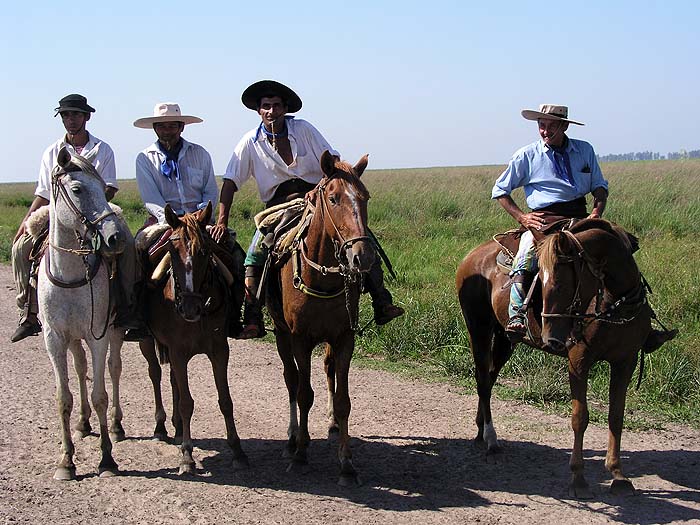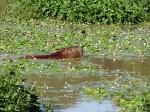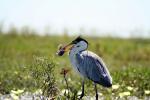I was very excited to be able to do a road trip around the Iberá wetlands of north-east Argentina recently, having never spent time in this area before. With a love of nature, of the unknown and of discovering new, out of the way places, this was the perfect trip for me.
What are the Iberá wetlands?
Covering more than 1.3 million hectares, the Iberá wetlands have been compared to the more well-known Pantanal of Brazil, and comprise one of the largest and most important freshwater areas in the world. The Iberá Provincial Park currently constitutes 482,000 hectares within the wetland area, although this is gradually increasing, due to the work of the Conservation Land Trust (CLT), thereby providing more space within which the flora and fauna of the area can thrive into the future. CLT is dedicated to conservation and the rewilding of endangered and extirpated species (those which have become extinct in a particular area, but do still exist elsewhere), and it has set up several wildlife restoration projects within the park.
The wetlands are not just water, but a fascinating mix of lagoons, marshlands, rivers, swamps, forests, dry grasslands, savannahs and floating islands, and are home to an incredible array of bird and wildlife. With over 350 species of birds, the area is a bird watcher's paradise, and wildlife enthusiasts can also hope to see capybaras, monkeys, marsh deer, armadillos and caiman, among others.
Concepción, northern Iberá
The Esteros del Iberá is a land of gauchos, who look after the cattle of the estancias and move their herds between the lagoons in search of dry land. To experience a traditional gaucho town, the place to stay is Concepción, which has yet to really hit the tourist map, and is a great place to start a trip to the wetlands. I unfortunately only had time for 1 night here, but it was one of the best and most memorable experiences of my whole trip. We visited the small museum on the square to learn about the fascinating history of the area, and headed to the gaucho shop for some traditional clothing; we took a boat trip out on the river to spot some of the local bird and wildlife, which really is still wild here; and in the evening, we sat on the veranda and enjoyed a sundowner while watching the gauchos ride off into the sunset. We were also lucky enough to be invited to a birthday party, where the guests of honour (3 generations of one family) were treated like royalty (as were we!). A local band played while the party-goers danced on until the early hours. It was a truly entertaining evening, giving us an insight into local culture, music and dance, and showed us just how friendly and welcoming the people of Concepción are.
One of the few places to stay in town, and also one of my favourite throughout the whole trip, was La Alondra'i: www.lastfrontiers.com/hotels/argentina/the-ibera-marshlands/la-alondra-i
Rincon del Socorro, southern Iberá
Rincon del Socorro is a lovely old estancia where the local wildlife (capybaras and rheas in particular) roam freely around the property, unafraid of the lodge's guests. Some of CLT's wildlife projects are based here, although their jaguar project, which I had particularly hoped to see, is based in San Alonso, in the heart of the wetlands (I did not have time in the end to get there on this trip, and so was very disappointed to miss out on seeing the 2 jaguar cubs which have been born there this year!).
I was supposed to be doing a horse ride in the morning, however due to the rather impressive storm, we were unable to take the horses out. The sun did, however, very kindly make an appearance in the afternoon for our boat trip, and we were out on the water for a stunning sunset. Both of my guides, Naty and Mingo, were fantastic, extremely knowledgeable and obviously very passionate about the projects.
www.lastfrontiers.com/hotels/argentina/the-ibera-marshlands/rincondelsocorro
Carlos Pellegrini, southern Iberá
Take a step back in time in Carlos Pellegrini, a small, sleepy town on the edge of the wetlands. The town is one of the main bases from which to explore the area, and there are several good accommodation options here, from cosy traditional houses to old estancias, all of which offer boat excursions.
If you want to get away from the world, get back to nature and enjoy some fantastic hospitality from the locals, I would certainly recommend a stay here. I only had time for one night, but immediately felt very at home, and was treated to some delicious home-cooked meals!
More than just a boat trip
Understandably, the main activity on offer throughout the region is a boat trip, but there are also several other options to keep you busy: walking, cycling, horse riding (or indeed swimming with horses), bird watching, 4x4 excursions, night safaris, cultural visits, and even scenic flights in a light plane. With so much to do, I feel I only really scratched the surface of what is an incredibly beautiful, yet relatively unknown, area, and would love to go back and explore further.
How do you work all of this into an itinerary?
A week is just about enough to get a feel for the wetlands, although you would need longer to really get into the heart of it.
- Fly from Buenos Aires into Corrientes (or Resistencia), and drive for 3 (or 4) hours to Concepción for 2 nights.
- Drive about 4 hours to Rincon del Socorro for 2 or 3 nights, followed by a night in Carlos Pellegrini, just an hour further down the road (alternatively, you could base yourself in Carlos Pellegrini and visit Socorro for a day).
- A lovely way to end the trip would be a stay at Puerto Valle (4 hours from Carlos Pellegrini), at the north-eastern corner of the wetlands, before flying out of Posadas.
- With a few extra days, drive 5-6 hours from Puerto Valle to the magnificent Iguassu Falls (with a stop at the San Ignacio Jesuit ruins on the way), where I would recommend a minimum of 3 nights.
To get deeper into the wetlands, drive from Concepción to San Nicolas and take a boat trip into San Alonso for 2 nights. From here, fly over the wetlands in a small plane to Rincon del Socorro (which has its own airstrip).
Travelling distances can be quite long, but the scenery along the way is stunning.
Combine a trip into the wetlands with our Northern Argentina itinerary: www.lastfrontiers.com/itineraries/northern-argentina







